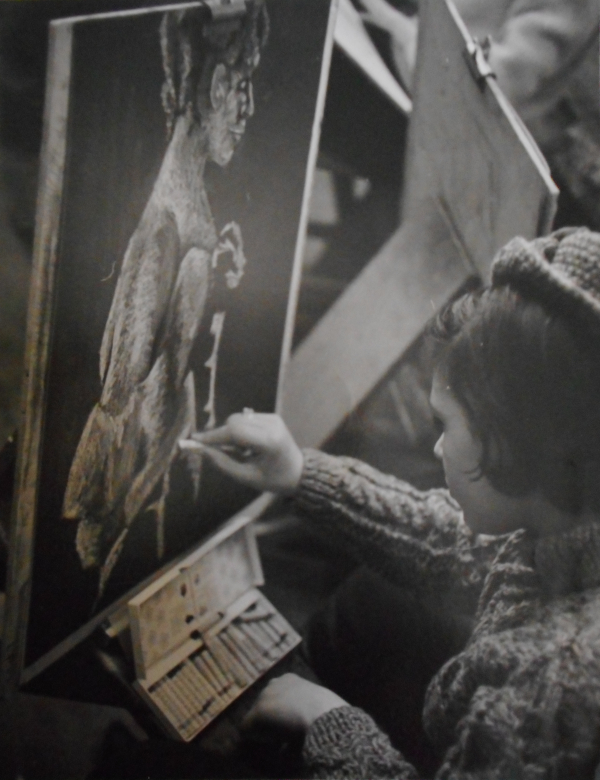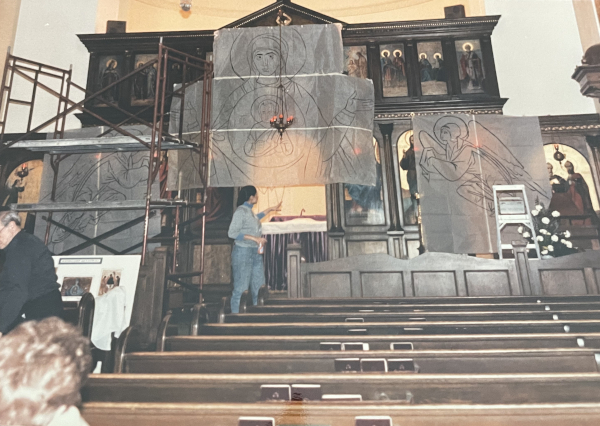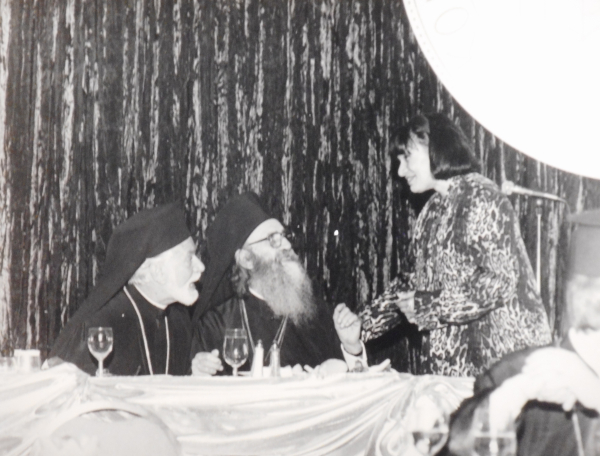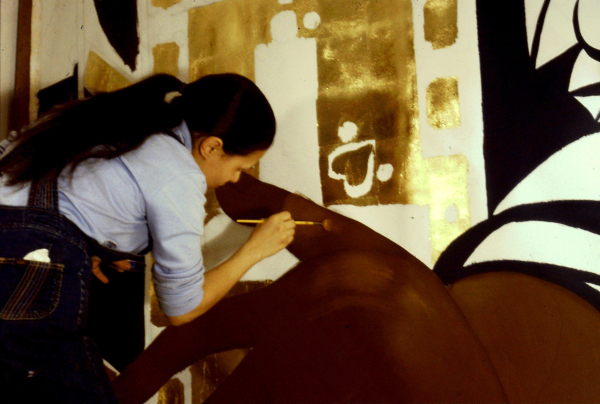Shirley Stella Kontos
1949-1991
When you put an Icon upon a church, ...the most beautiful experience is to see a woman, or a man or a child go and light a vigil (candle) light to that Icon. They're not praying to that painting - they feel that person, that spirit, might really be there. "
Shirley Kontos
We read biographies about famous and influential women in the Arts and marvel at their accomplishments. What would it be like to accompany these individuals on their journey to prominence and witness their struggles and accomplishments. I had this privilege, as the sister of America's first titled female Orthodox Christian Iconographer. Her story is a journey of faith, courage, resilience and triumphs.
Shirley Stella Kontos was born to Greek immigrants James and Carry Kontos on December 14, 1949. Her passion for art developed at an early age and further blossomed in High School winning a scholarship to the Art Institute of Chicago Saturday program. When Shirley graduated High School, she entered the Art Institute. Concurrently, her Liberal Arts classes were at the University of Chicago.

In March 1967, her senior year in high school, she had an extraordinary encounter that propelled her on a spiritual journey; it transformed her future.
Despite her parent's warnings about muggings, Shirley wanted to take the elevated train to her Saturday class. At the train station, there was no attendant, no one was on the platform. She stood in the chill of the March air waiting for the train.
Shirley was deep in thought when she felt she was no longer alone. A tall blond man walked up beside her. He greeted her by name. Shirley returned the greeting noticing no one else was on the platform. Anxiety started to creep within her. She started to regret not taking her parent’s advice. Who was this person?
The man continued to talk to her as if he had known her for ages. Shirley asked him if they had previously met. The man noticed Shirley's uneasiness, and told her we know each other from Church. Shirley was now truly perplexed. The family had attended their Church from her infancy. She knew all the families closely and could not recall this man's face. Offending a close friend of the family was the last thing she wanted to do. Once again she asked his name. He ignored her.
The train arrived. Shirley tried to find a seat alone but the last seat available was a double. The man sat next to her. He seemed harmless so she let him ramble on. He revealed her life to her in intimate detail; her inner most thoughts and feelings. They arrived at their destination and deboarded.
As they walked to the Art Institute, she heard the man telling her she would be famous one day, but not in secular art, but in religious art, Iconography. Shirley laughed uncontrollably, telling him that no woman becomes famous painting Icons. In fact women in the Orthodox Christian tradition are not Iconographers. Shirley demanded his name. The man finally answered, "I am Archangel Michael." Shirley froze in her tracks. She paled from shock. Micheal continued. His mission was to give guidance.
He spoke of her shortcomings especially lack of forgiveness and intolerance. They reached the steps of the Art Institute. Michael chastised her for not taking her parents advice. As he said this he pointed to a bush. It shook and a dark haired man wearing a hooded sweater emerged and ran from them. Michael told her the man was waiting for her to be his victim. The Archangel had rescued her.
Michael's time with her was ending. Regaining herself finally, Shirley asked if she would ever see him again. His reply was cryptic. They would meet again symbolically at the pinnacle of her career, in the context of an encounter with her greatest critic. If she acknowledged her shortcomings and forgave her critic she would achieve the ultimate recognition. If she ignored him she would lose all. Shirley turned away for a brief second. When she looked back Michael had vanished.
After the Michael meeting, Shirley's academic career at the Art Institute, quickly progressed. Her talent brought her recognition as a painter and earned her a lecturer/teaching position and scholarship to Northwestern University. She was the youngest female to receive this honor. Her work grew in fame until she received the ultimate recognition; the invitation of a one woman show at the Whitney Museum in New York. Disastrously her paintings were stolen from the family apartment. The show was cancelled.
By divine intervention, this tragedy brought about her transformation to Iconographer. Subsequently, Shirley had a series of dreams of the Virgin Mary requesting Shirley to paint Her Icon. Shirley obeyed and thus began her spiritual journey.
Despite the obstacles in a male dominated field. Shirley persevered. Initially she painted small portable Icons. Eventually she transitioned to Iconographing churches, in numerous states. At the unveiling of her Iconography at the Annunciation Greek Orthodox Cathedral in Akron, Ohio, the late Archbishop Iakovos of America described her icons as "Windows to Heaven" and bestowed upon Shirley the official title of Iconographer. Thus, she became the first female Iconographer in America.

Her greatest achievement however was the Icons to adorn the Petrillo Band Shell in Chicago for Services during the visit of the late Patriarch Dimitrios I, the worldwide leader of Orthodoxy. This was the first visit of a Patriarch to America. She prepared six, 4'x8' icons of Christ, the Virgin Mary and the Saints and a 18' tall icon of the Virgin Mary with Christ child. During the Patriarchal banquet, Shirley encountered the Church leader who was her greatest critic. She acknowledged his congratulations for the Patriarchal Icons and forgave him for his prior denunciations. Thus Shirley fulfilled the challenge from the Archangel Michael.

The Patriarchal Icons earned her national acclaim. Their preparation was featured on the major networks, and also in front page articles in the Chicago SunTimes and Chicago Tribune. Unfortunately, at the pinnacle of her career, Shirley succumbed to cancer in 1991 at the age of 41. Her Iconography is her legacy. The journey of her struggles and achievements is an inspiration for females who aspire to achieve excellence in their careers.

Read more about Shirley's career and legacy in Windows To
Heaven: The Spiritual Journey of America's First Female
Iconographer by Georget Kontos Photos and Rev. Fr. Dean Photos
amazon.co.uk |
amazon.com

